A trip to overtouristed Tenerife, Canary Islands/Spain, with mixed feelings
How it was to travel to the largest Canary Island, where overtourism is everywhere:
I have to admit straightaway that I did not feel completely comfortable with the decision to travel to Tenerife. It was the first time that my husband and I headed here. We had avoided it so far, first long years because of its mass tourism, then later on due to growing overtourism. Originally, we wanted to go skiing and winter hiking. However, as the time drew closer to our time window end of March, we felt less inclined to do so. Instead, we were longing for warmer climes. As a consequence, we booked a stay in Tenerife at short notice instead. And now I want to describe how the trip to this (hopelessly?) overtouristed island of Tenerife was.
After an overview on the tourism situation in the Canary Islands respectively in Spain, I will share my personal experiences as to traveling the area.
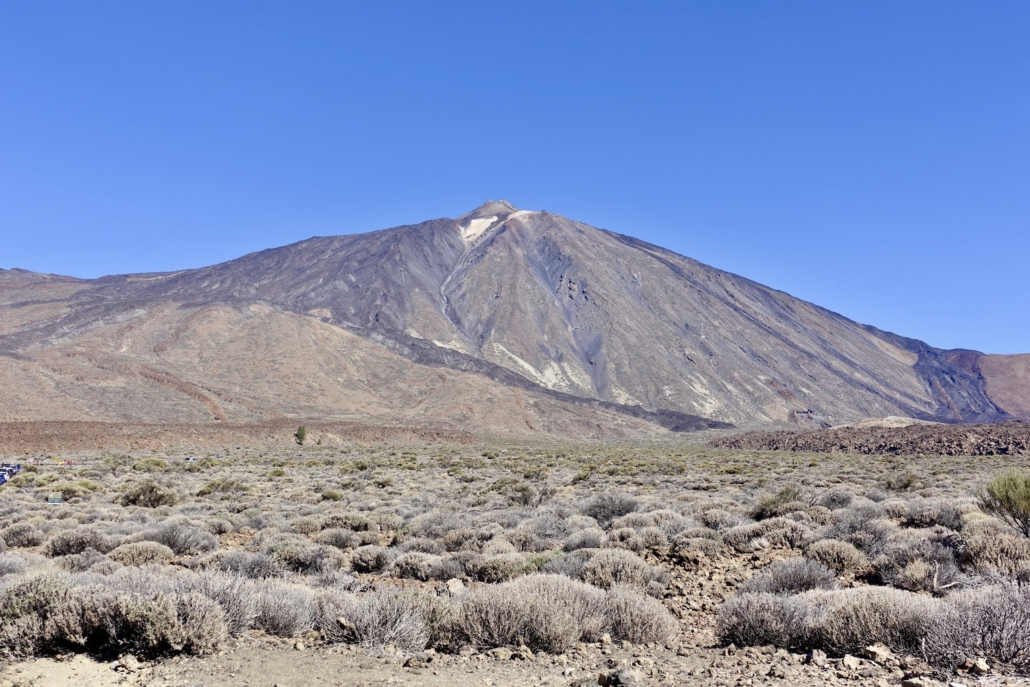
Overtourism in the Canary Islands respectively in Spain
You might have heard of protests of the local population in the Canary Islands and other parts of Spain because of too many tourists in their respective home regions. Spain is the world’s second-most visited country after France. Year after year, visitors’ records are broken. In 2024, the country saw 138 millions of them, an increase of more than 10 millions versus 2023 (source: statista). The number of tourists is two times more than Spain’s population. And in the Canary Islands, this is even worse, it is more than six times (source: Real Instituto Elcano, for 2023).

Affordable housing problem in overtouristed Tenerife
Protesters in Tenerife are not against the tourism industry because they understand its value for their island. Yet, they do not want over-exploitation which not only leads to a lack of affordable housing but also to environmental issues and strain on public services. Furthermore, they wish a tourism that benefits the local economy instead of profits out of it ending up outside Spain. And the concerns of the Canary Islanders are not unfounded at all, according to the National Statistics Institute INE, 34% of them are at risk of poverty (in 2023).
In the context of the affordable housing problem for locals in Spain, there is not only the tourism to blame for the grievances. The country’s stock of social rental dwellings is almost the lowest among the 38 OECD countries (source: Real Instituto Elcano, for 2020). While this is not a Spanish problem, it is especially acute here. And the government reacted, not by providing more of such housing but by enacting new legislation. As from April 2025, homeowners in residential buildings will now need the “explicit approval” (60% majority vote) from their neighbors to operate their properties as short-term vacation lets. However, these regulations do not apply for properties already being used for such lets. Is this enough to fight the overtourism in Tenerife?
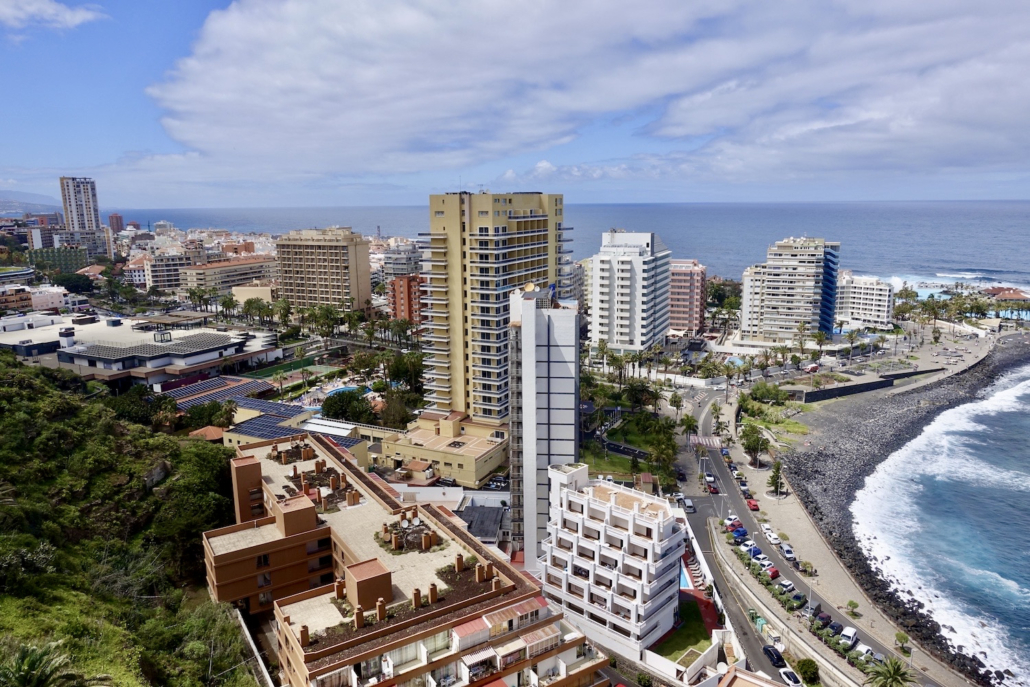
A stricter approach to mass tourism in Tenerife
In addition to tougher laws on short lets, Tenerife recently announced the introduction of stricter rules for its most prominent attraction. It is about El Teide National Park. From 2026, visitors will have to pay an access fee to the site where you find El Teide Volcano, Spain’s highest mountain, the so-called eco-tax. And private cars and coaches will no longer be able to enter the national park.
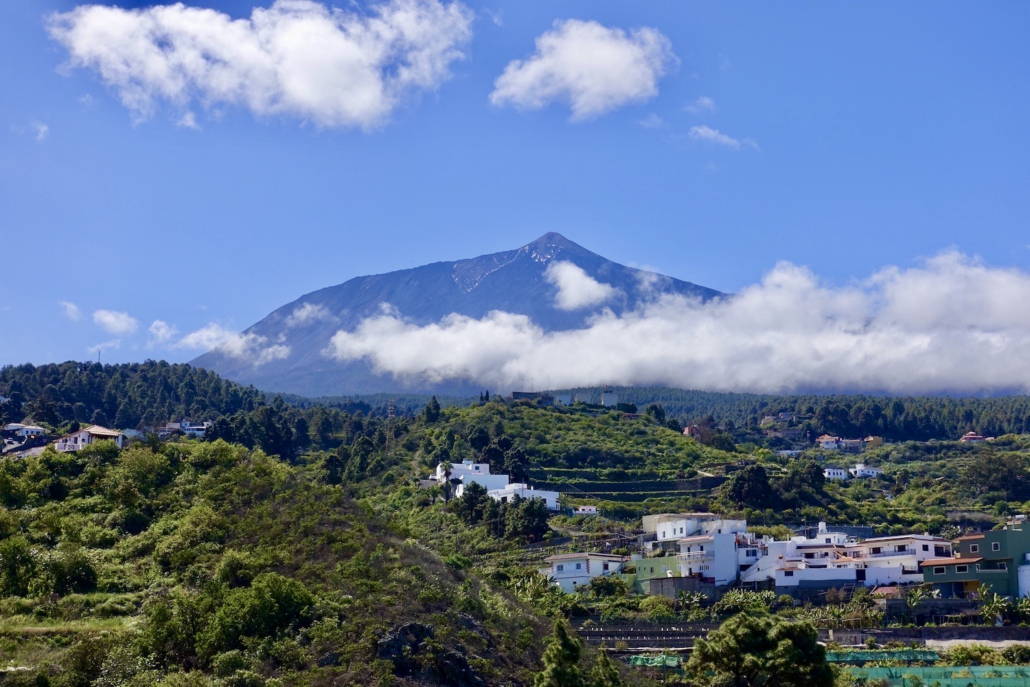
This is not the first restriction for the El Teide National Park. Since 2024, you need a permit if you want to hike up to the Teide Peak. It is necessary for tours starting from the cable car mountain station or from further down. And it also is connected with a time slot.
There are other limitations too in terms of popular attractions in Tenerife. These concern for example the Masca Gorge Trail (descent of about four hours). Here you have to book a time slot and pay an entrance fee of at least 40.66€ per person. And this has been required since 2024 as well.

Furthermore, Tenerife’s local government also reached an agreement with the island’s transport sector. According to this, the size of tourist buses in environmentally sensitive areas such as Masca or the Anaga Rural Park shall be reduced. Plus, the authorities work on a one-way traffic system for all buses to Masca in order to reduce traffic congestion and impacts on the nature. Finally, the Tenerife council approved a plan to cap the daily number of visitors to Anaga.
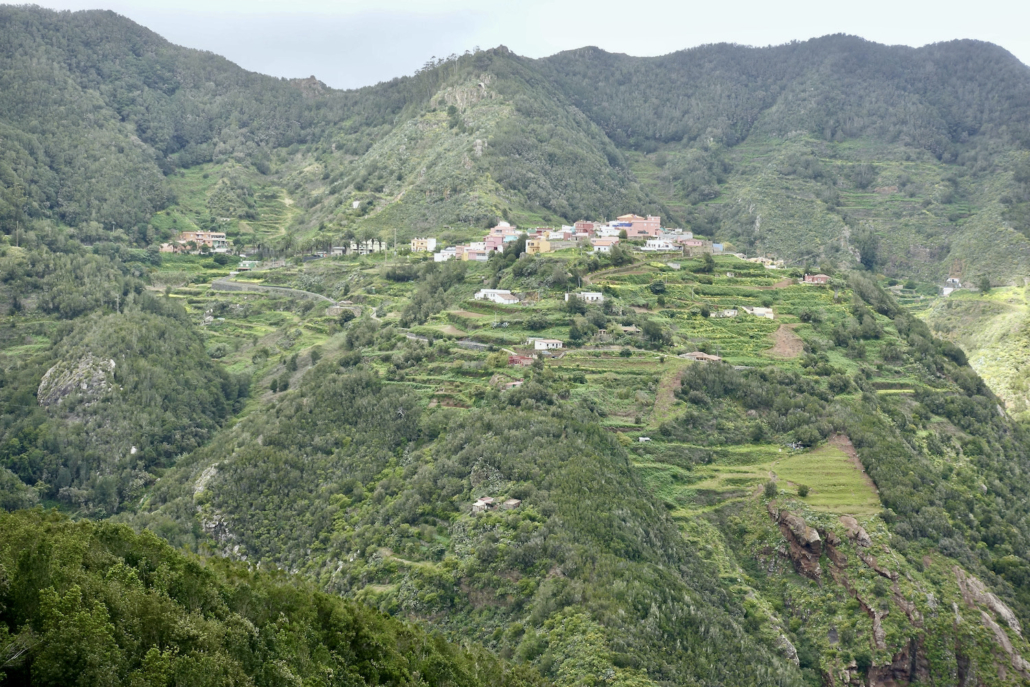
How I experienced overtouristed Tenerife as a traveler
How I traveled Tenerife
As earlier mentioned, I came to Tenerife with mixed feelings because of its overtourism and the protests against it. Yet, where to head in Europe in March when looking for warmer climes? And we already stayed in Madeira in January – and will return in November. So, we spontaneously decided to give Tenerife a try. This in particular as one luxury hotel in the island’s south had caught our attention (details follow below).
When my husband and browsed the lodging options a few weeks before coming to Tenerife, we quickly noticed that the island was well booked for end of March. All the boutique hotels in the island’s north that we found appealing were already more or less fully booked. So, we settled for a bigger accommodation. And this was Hotel Hacienda del Conde Meliá Collection Golf & Spa in Buenavista del Norte.
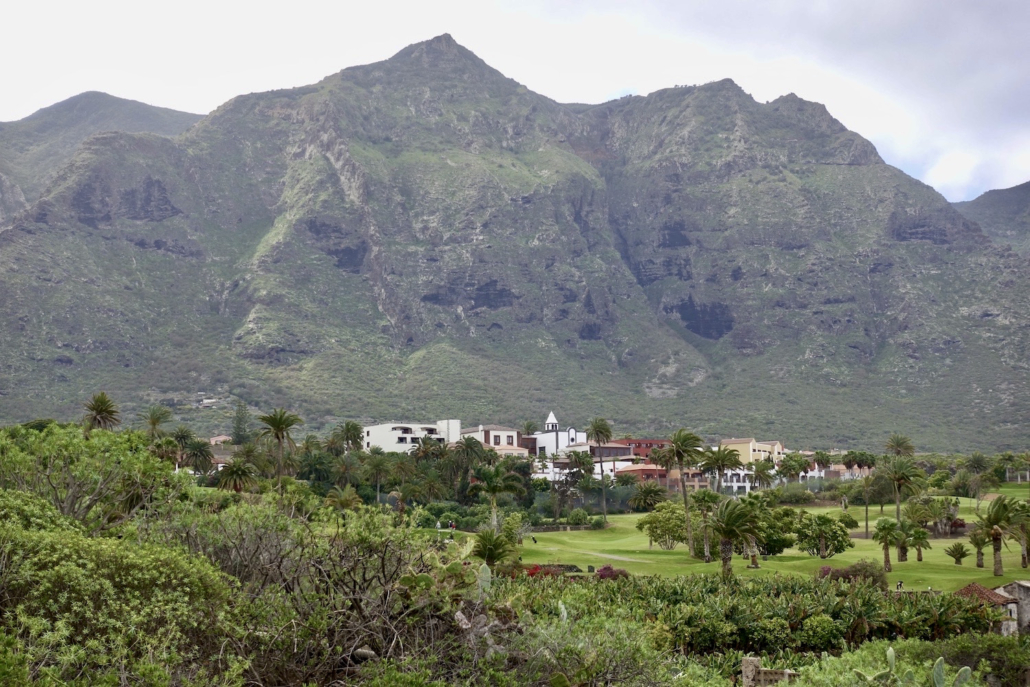
As to Tenerife’s south (the main tourist area), this was our destination for the second half of our trip. As we had heard not so good things about Los Cristianos and Playa de las Américas (mostly mid- to downscale lodging), we opted for Costa Adeje. This part of the island’s southeast coast is known for its many luxury hotels. And here we chose a Barceló accommodation, Royal Hideaway Corales Beach Adult Only in La Caleta.
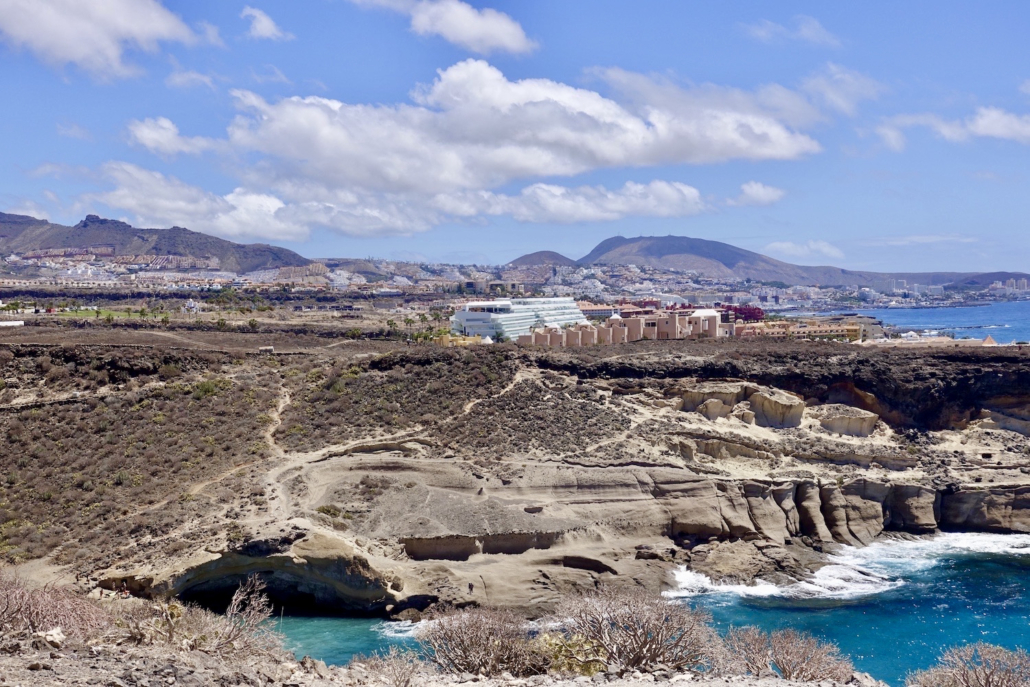
Just some more lines about these two hotel groups, both of them are Spanish ones. Meliá is the country’s largest and has increasingly bet on the high-end segment as of late. As to Barceló, it is number two in Spain. And both sub brands (The Meliá Collection and Royal Hideaway Luxury Hotels & Resorts) boast of having close links to culture.
How it was to explore Tenerife’s sights in the shoulder season
As my husband and I consider ourselves as travelers, we wanted to explore Tenerife’s beauties instead of coming for the “3S” (Sea, Sun and Sand) only. So, we had opted for two destinations in Tenerife, one in the less touristy north and the other in the heavily touristed south. And we had rented a car in order to get around easily.
In the pre-trip time, I had determined following main activities for our Tenerife trip: Teide National Park (features the Teide-Pico Viejo stratovolcano), Masca (possibly the most visited mountain village), Anaga Rural Park (mountain range in the northeastern part of the island), San Cristobal de La Laguna (first established city in the Canary Islands and UNESCO World Heritage Site) and Garachico (considered by many the most beautiful town in Tenerife). And I found this program a doable thing for ten days in Tenerife in the shoulder season.
Here is how it was to visit all these identified “travel goals”. I should mention upfront that it would probably have been easier to visit these places if my husband and I were early risers. We usually start our outings not before 9 or 10am. And this is a difficult time in overtouristed Tenerife.
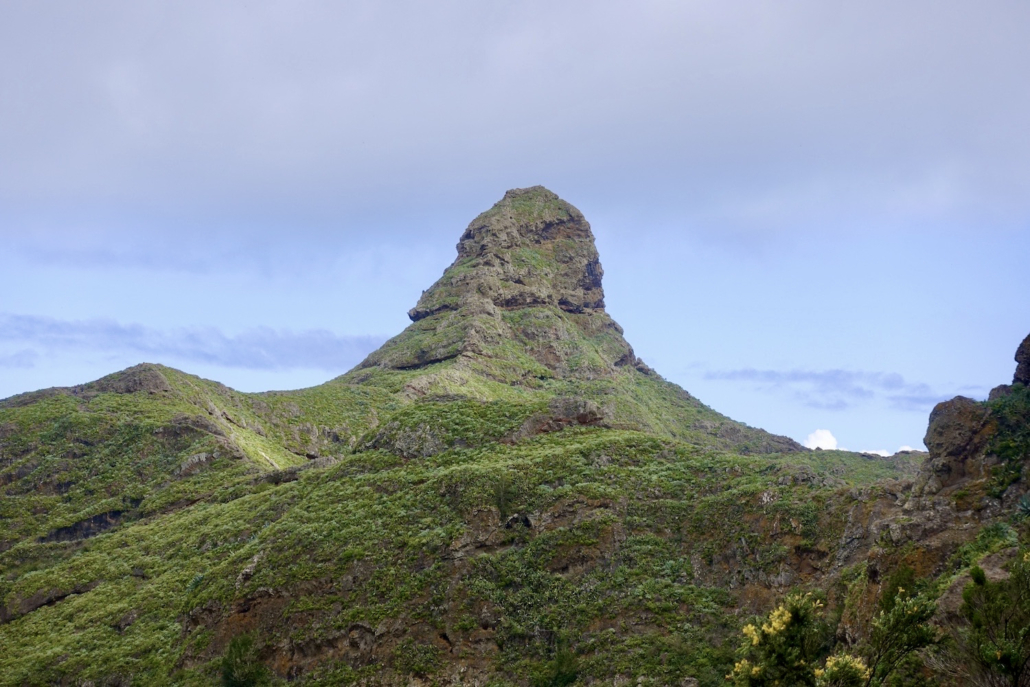
Teide National Park (center)
Here we “already” managed to leave our hotel at 9am so that we reached the parking lot at Parador de las Cañadas del Teide in the Teide National Park towards 10.30am. While it was already full, there was still space to leave the car on the driveway to this hotel. You have to know in this context that from here you can make the one or other shorter hike. However, if you want to go up to the Teide Peak, you have to go to the cable car’s valley station. When we passed it maybe around noon on our exploring the area, the entire access road to the Teide Cableway was full of cars.
As to our location next to the Parador, when we got back from a hike one and a half hour later after our arrival in the park, there was not one single parking spot left. We even noticed that some cars had parked on the bus parking lot. To our amazement, parking did not cost anything in this national park, neither did the entrance to it. Yet, there are very few parking spaces everywhere we went here. So, I am not surprised to learn that Tenerife’s local government will establish a new regime in the Teide National Park as from 2026.
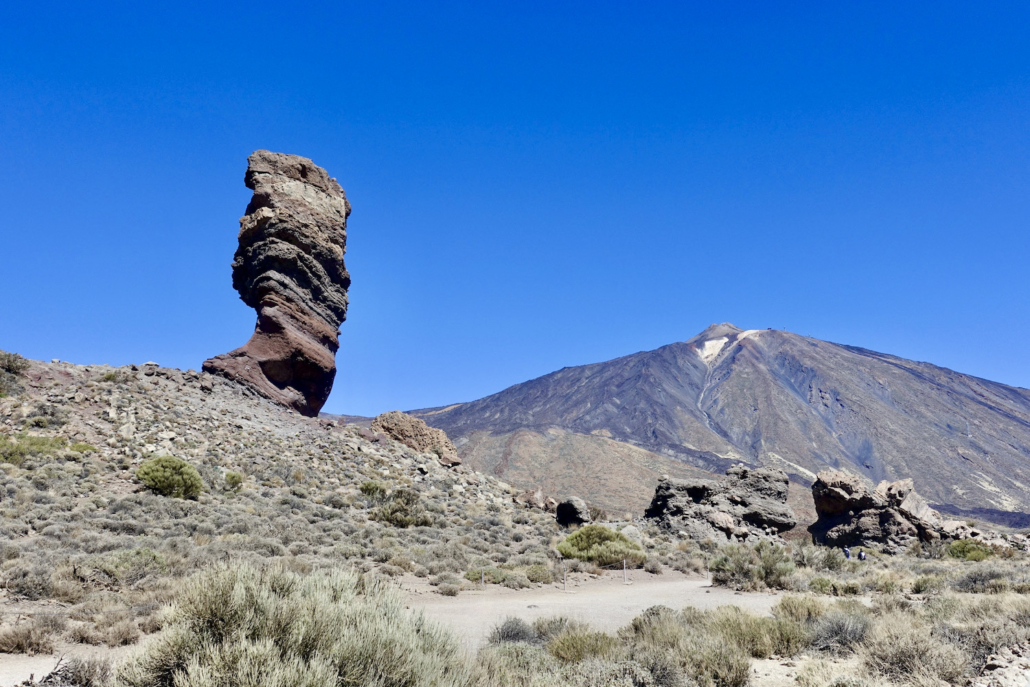
Masca (northwest near Santiago del Teide)
You have to know in the context of Masca that it is widely considered one of the most beautiful mountain villages in Tenerife. In addition, the descent hike through its gorge to the sea is very popular. As I stated before, nowadays you have to book a time slot plus paying around 40€ for it. While I found strolling through Masca’s main settlement – La Piedra, there are four of them – not that special, its situation in a lovely mountain world definitely is. As all four hamlets are connected by ancient paths, walking some of them – as we did – is a good idea.
When it comes to accessing the area, doing this by car is no easy undertaking. Roads in this region are narrow and winding with steep slopes in some sections. So, it is challenging for vehicles to pass, especially if you encounter a tour bus. Plus, parking spaces are very limited in the area. We were lucky with the latter as we left our car at La Cruz de Hilda and walked down to the main settlement (great views on the way). As to getting around by car, you need good nerves and driving skills (experience with mountain roads). Thus, I am not surprised that the authorities do not want to allow big tour buses to Masca anymore. And the same is true for the idea of a one-way traffic system for all buses here.
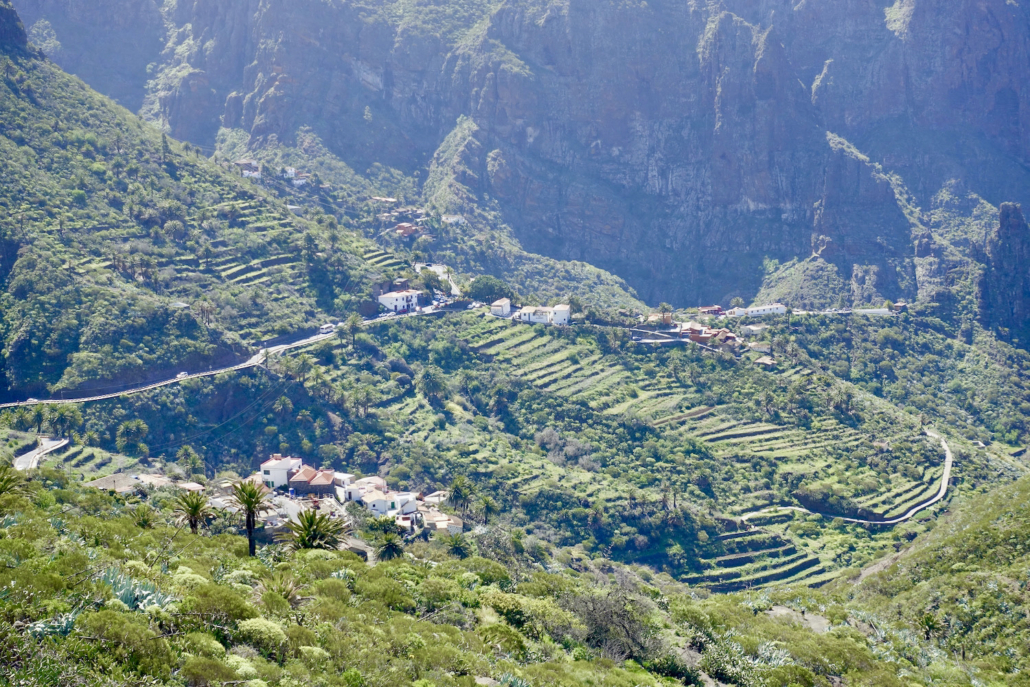
Anaga (northernmost point)
Only with difficulty I could persuade my husband to make a trip to Anaga on our last day. Too bad were our previous experiences with other popular areas in Tenerife (too many visitors and traffic plus too few parking spaces). Anaga, more specifically the Anaga Rural Park, is an area of extraordinary natural beauty with peaks, ravines and laurel forests. And again, there are neither fees for entering nor for parking here.
When we arrived at Cruz del Carmen around noon (as almost always much too late), the car park was awfully full. Cars were circling around it, and I had to use all my powers of persuasion so that my husband did not immediately turn around and leave the park. Instead, we headed on further north to the tiny mountain village of Taborno. Here we secured the last parking spot outside the settlement in order to do a hike around the Roque de Taborno, “Tenerife’s Matterhorn”. On the road there and back from Cruz del Carmen – which is narrow – , there was some traffic, but not as much as around Masca. Yet again, it is understandable that the authorities want to limit the access to Anaga in general.
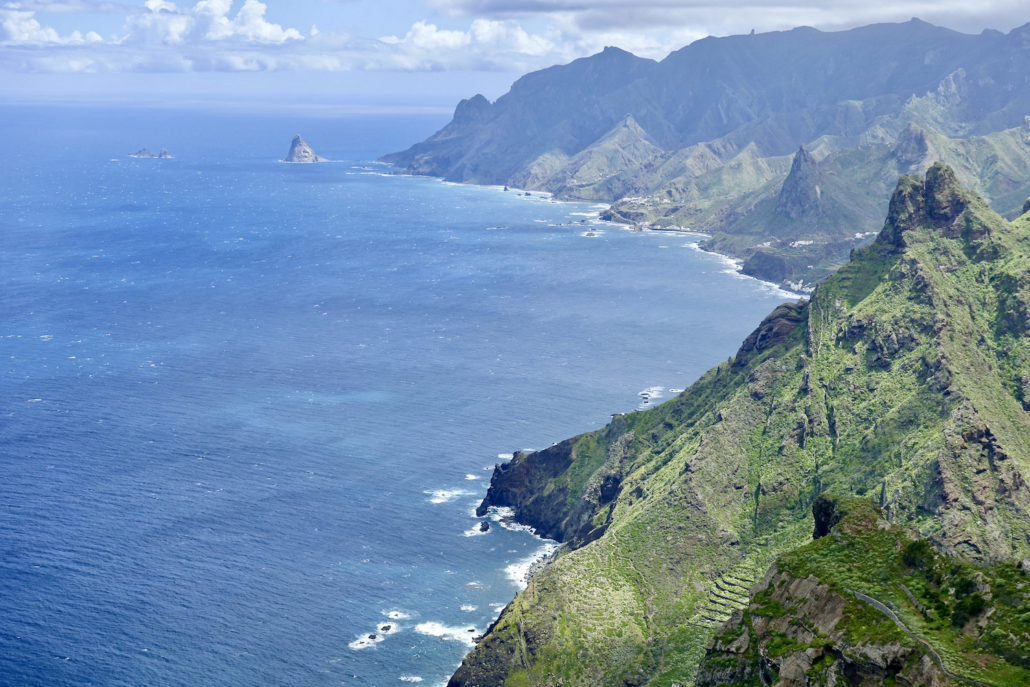
San Cristobal de la Laguna (north near Santa Cruz de Tenerife)
San Cristobal de la Laguna is the first city that was founded in the Canary Islands. At the same time, it is also the only one that was declared a UNESCO World Heritage Site. And it is really worth a visit with its impressive colonial architecture. On our first stop here, we abandoned our plan of touring it. This because the weather was not favourable and there was quite a long queue in front of the parking lot in its outskirts (Las Quintereas). On our second try a few days later, the sun was shining, and the queue was even longer. Nevertheless, we joined it and waited maybe twenty minutes until it was up to us. Afterwards, we could explore the city without too many people around. When returning to our car, we noticed that the parking fees were very low.
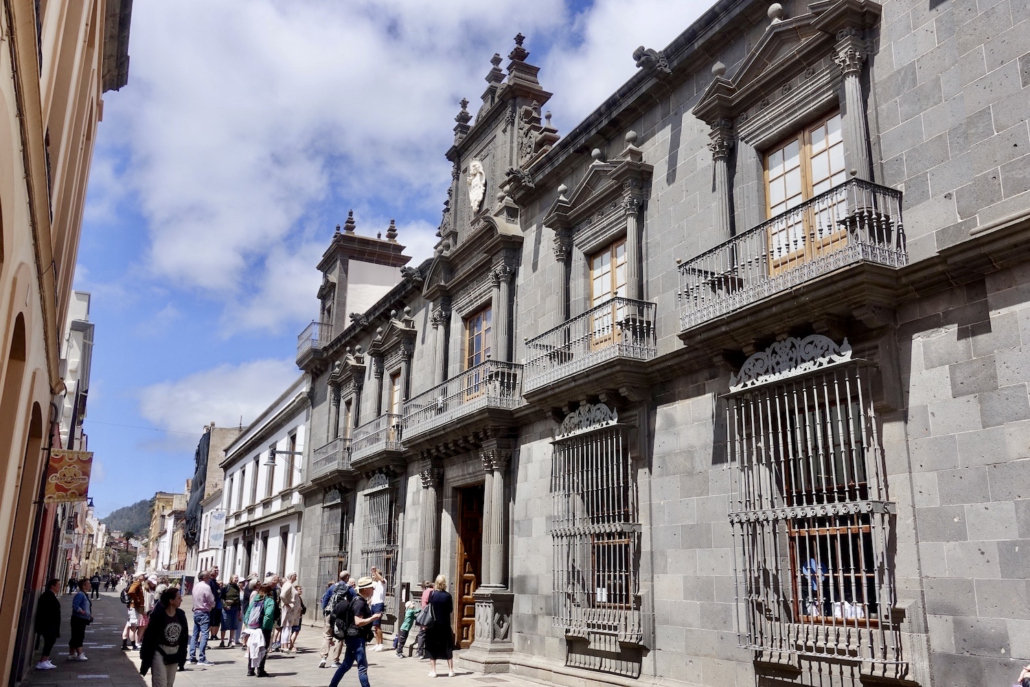
Garachico (northwest near Buenavista del Norte)
Garachico is a pretty coastal town with some natural rock swimming pools. It has an interesting historic and artistic heritage and comes with an ancient quarter, declared as an Asset of Cultural Interest in 1994. My husband and I passed Garachico several times because the hotel that we had booked for our stay in the island’s north was nearby. When doing so, we noticed that it was busy all the time. Nevertheless, we found a parking spot every time we came here, although with a bit of patience. There are two parking lots on both sides of the town – again with no fees. And we were able to stroll through town without the crowds.
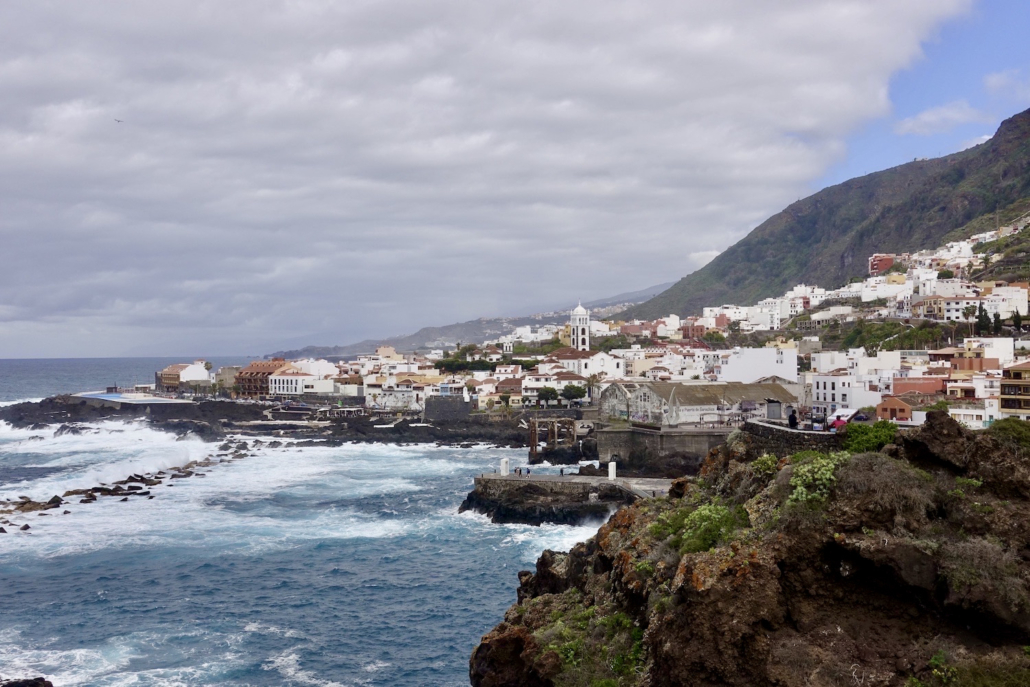
After my travel experiences as to some of Tenerife’s most important sights, now to my impressions about the island’s south.
What was it like to walk Tenerife’s main tourist zone in the shoulder season
Before describing how it was to walk Tenerife’s coast all the way from Los Cristianos to La Caleta, the island’s main tourist district in its south, first a few lines to how it came into being.
Backgrund information on Tenerife’s tourist hotspot in the south
My husband and I lodged at the very western end of Tenerife’s south coast, in La Caleta, part of Costa Adeje. The south is where all the masses of tourists usually stay when looking for the already mentioned “3S” (Sea, Sun and Sand). As I stated before, while you find low to mid-scale tourism more to the east (Los Cristianos and Playas de las Américas), it is mostly about upscale hotels in the west (Costa Adeje).
As I had read that there in an uninterrupted coastal promenade between La Caleta and Los Cristianos, I wanted to find out how it feels to walk through all the sub-areas of Tenerife’s south coast. So, my husband and I took the bus to Los Cristianos to start this exploration. This place used to be a modest fishing village before the mass tourism came in the 1960s. It took in full swing with the inauguration of the new international airport in 1978 close by.
As to Playa de las Américas, it is a purpose-built vacation resort, a bit west of Los Cristianos. It was built in the late 1960s. As to its name, it pays homage to the transatlantic expeditions that departed from Spain to New World. As far as Costa Adeje is concerned, its early development started in the 1970s. In 1993, the first luxury hotel opened in the area. It is about Hotel Bahía del Duque,
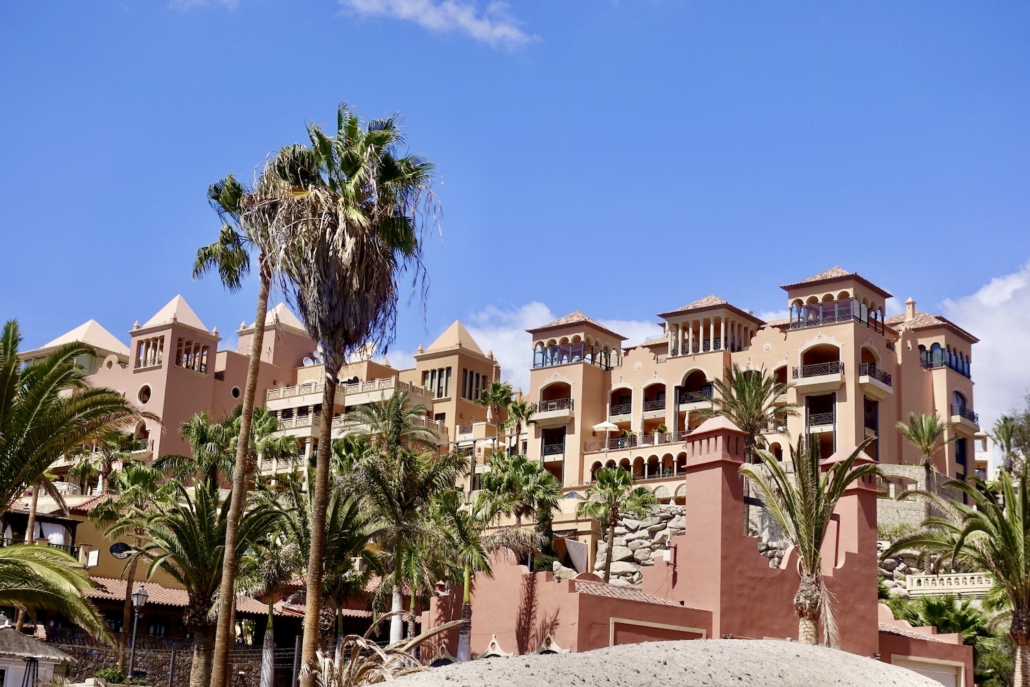
which still is a leading house in Tenerife. Its success paved the way for more upscale lodgings on the Costa Adeje.
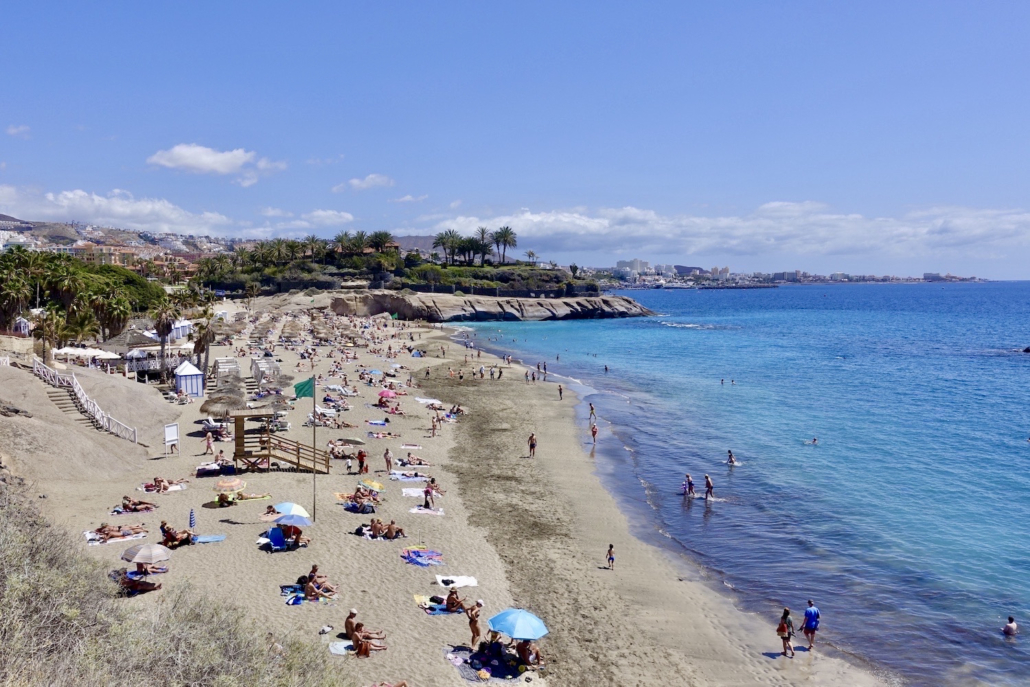
Walking from Los Cristianos to La Caleta
Once arrived in Los Cristianos town center, we headed down to the sea, passing lots of apartment blocks. Most are definitely geared to short lets, a few seem to be home to locals. Down by the water, hordes of tourists were populating the beaches and the coastal path. I do not mean to be disrespectful, but there was lots of bare skin (on the walkway and adjoining restaurants). Many women wore only a bikini, and a large number of men were shirtless. Also, people consumed beer, sangría and fries, everywhere and all the time.
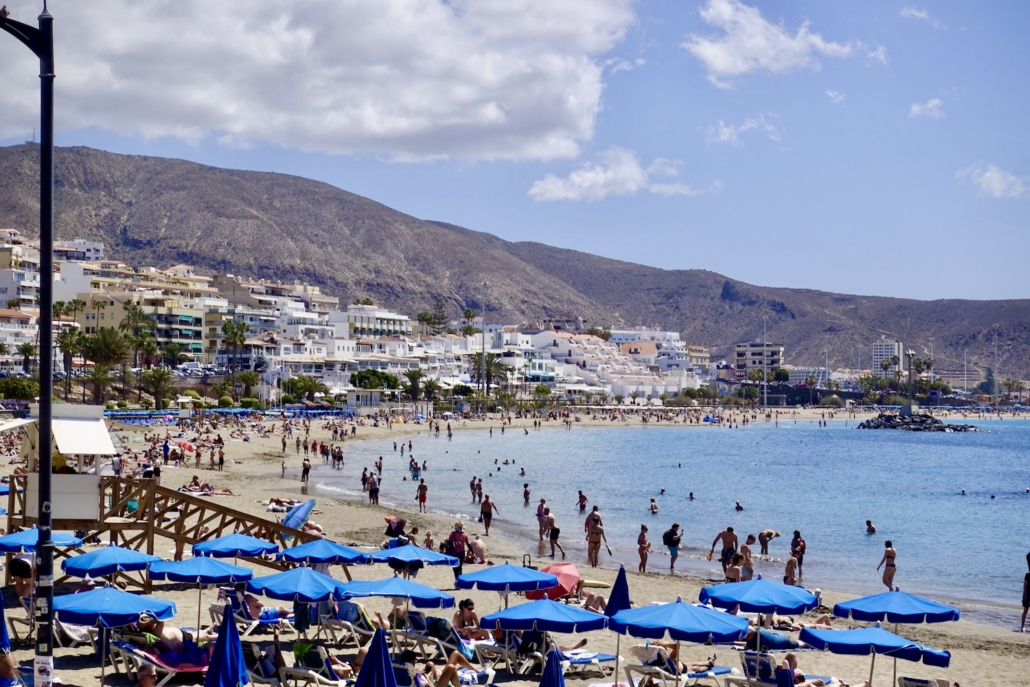
And imagine, as we walked further along the coast towards Playa de las Américas, I noticed that numerous mobility scooters were around – usually used by disabled people. Yet there were so many – mostly for two persons – , I thought it was not possible that there were so many impaired persons around. And in fact, I discovered signs indicating that these scooters were not allowed unless for those having mobility issues. And I could swear that many of those I saw on these things did not need them! Anyway, the longer we walked, the scenery changed for the better. However, this was not before Costa Adeje. This was also where the coast became more rugged and as I find more beautiful.
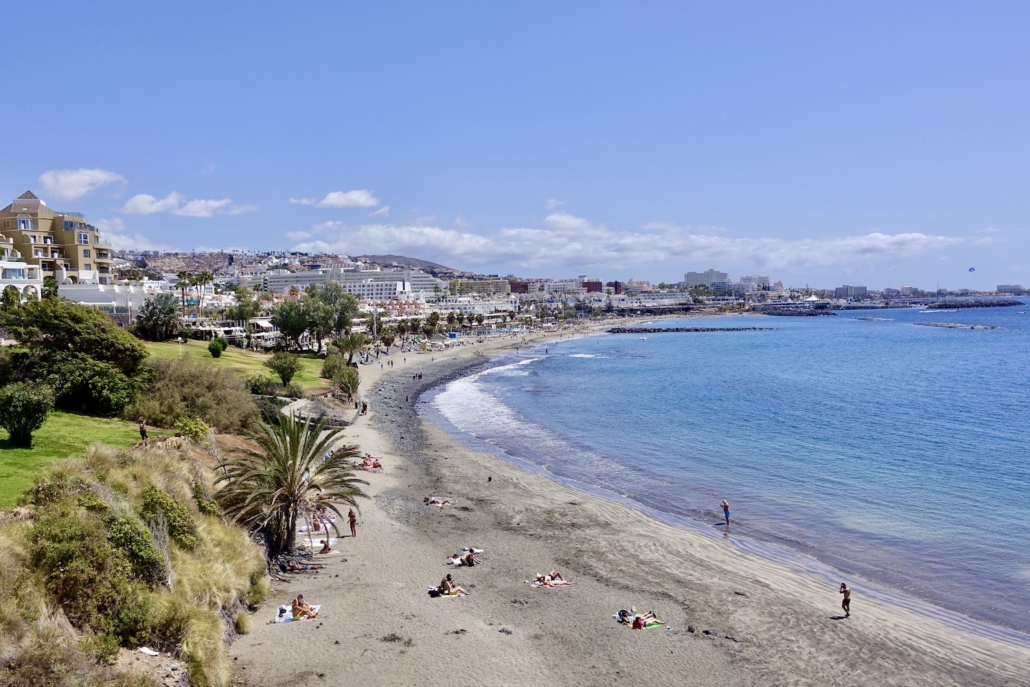
The highlight here when it comes to meeting well-groomed tourists was around Playa del Duque. Here the hotels are nice (upscale), the passers-by were adequately dressed, and the lunchers had meals that looked appealing. And it was also less busy here, although still touristy.
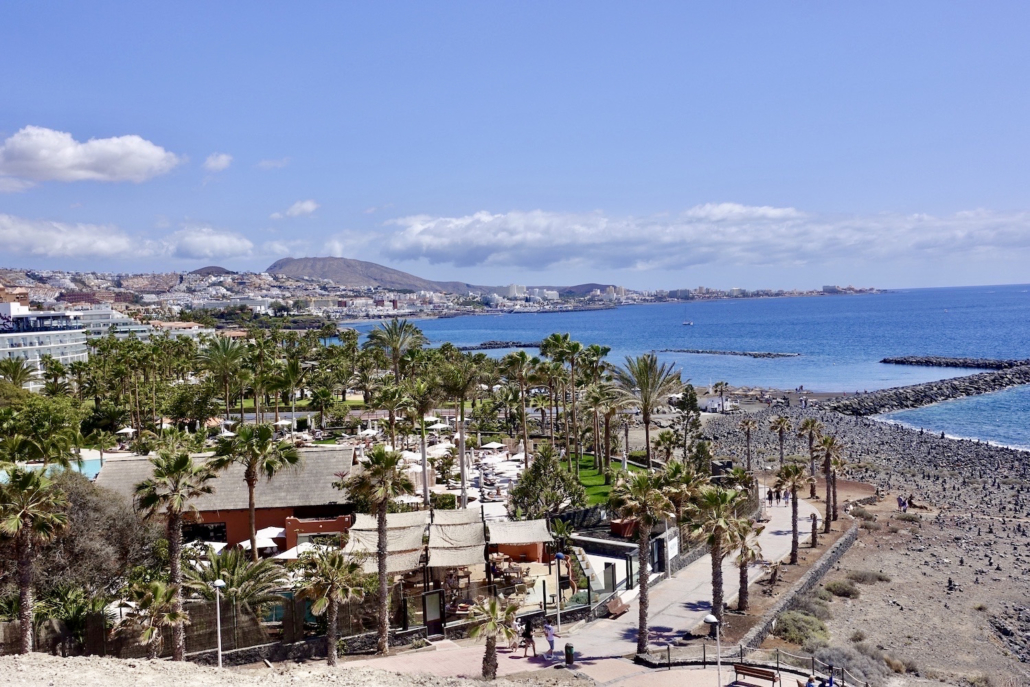
And this was unchanged until the very end in Caleta
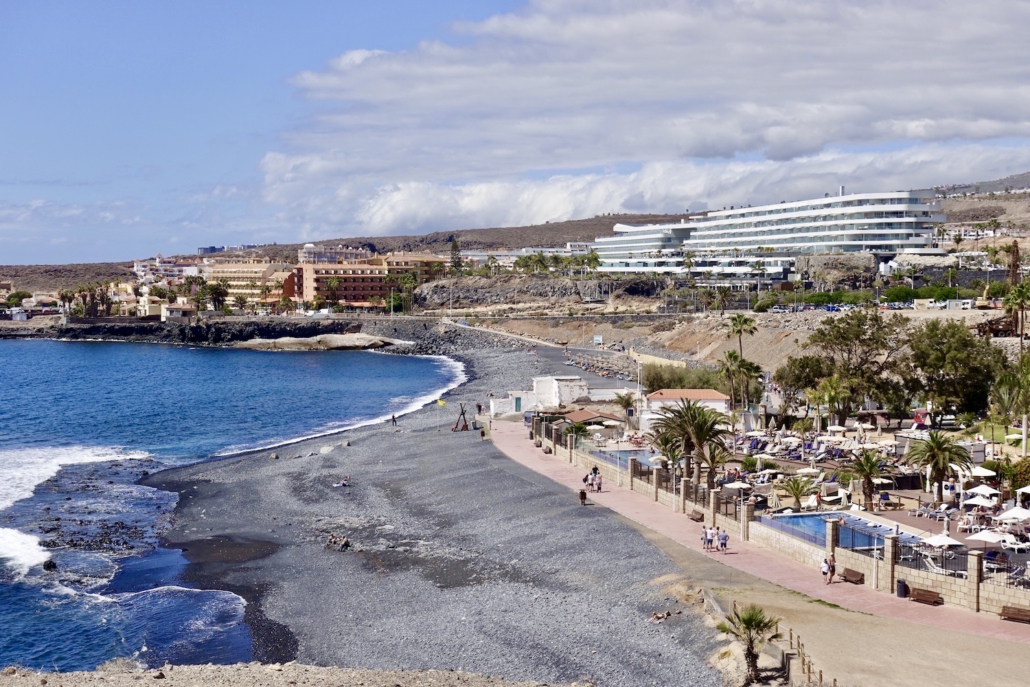
where you can even find some fishing boats.
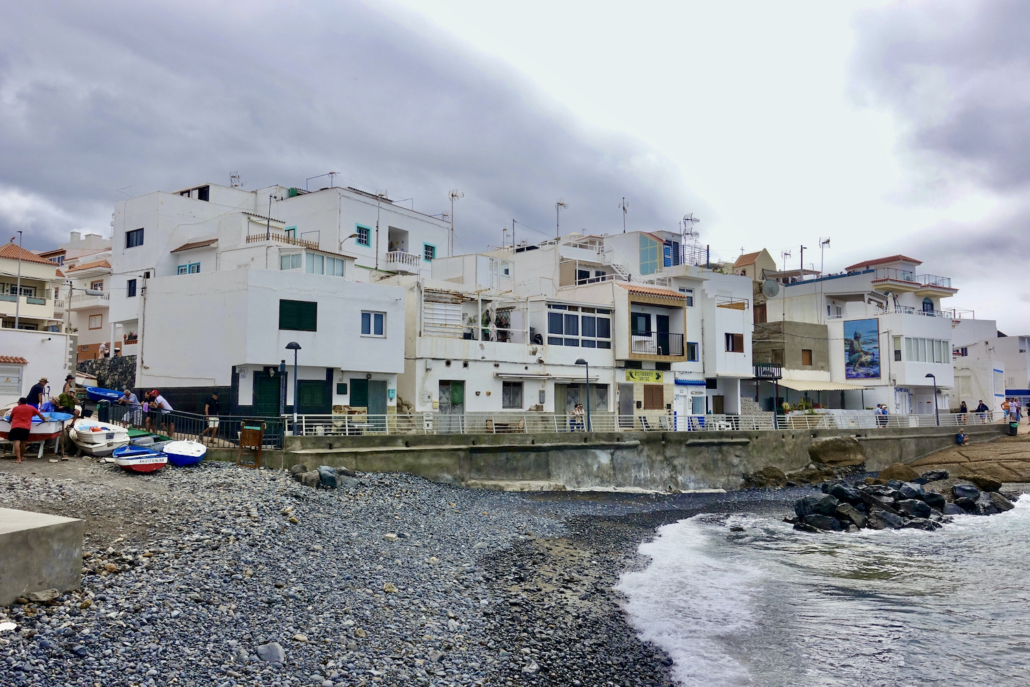
And this was the journey through Tenerife’s most overtouristed area.
My verdict on overtouristed Tenerife
Tenerife rushes from record to record in terms of visitor numbers. It is the most visited island in the Canary Islands. And it was also the destination of my husband and I, in March 2025. It was our first time here, yet probably we will not return here any time soon. Not because it does not have lots to offer for travelers. I especially liked the northwestern part of the island. We first stayed in Buenavista del Norte, which is a nice place with many sights in its surroundings. Also the Teide National Park, Masca, the Anaga Rural Park or the city of San Cristobal de la Laguna are jeweils.
I was not so fond of the island’s south, at least as to its infrastructure development. You could catch sight of it already when flying into the airport of Tenerife Sur. It is one large tourist zone along the coast. Behind it there are grounds with dug-up soil, that is it. Maybe you find the one or other banana plantation, but they are locked down like Fort Knox (so different from Madeira).
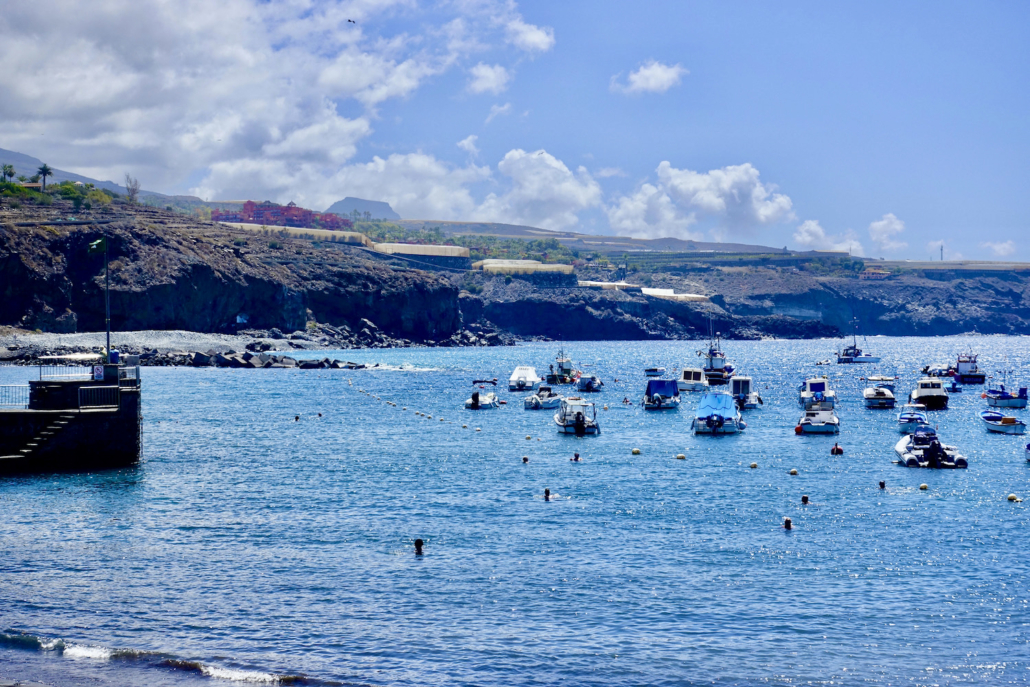
What is definitely better in the south, is the climate. It is sunnier and balmier than in the north. And I preferred Costa Adeje (southwest) over the rest here.
Tenerife may be fine when you are here for the sea, sun and sand only. Then you are in the right place in its south. However, if you want to explore the island’s beauties, this is a tough thing to do. In this case, you cannot help but encountering excessive tourists, overwhelming traffic and lack of parking. So, you can definitely speak of an overtouristed Tenerife. And this also in the shoulder season. The authorities took some first steps to manage the tourist movements, but more have to follow. Also new short lets are not that easy anymore. But what about the existing ones? Tenerife just got started in its efforts to fight against overtourism.
Will I post more on Tenerife?
I am undecided whether there should be more content about Tenerife on my blog. It is not the place I recommend if you are a traveler who likes to discover a site, just like me. My husband and I did the one or other walk/hike on this island which we liked and where it was not too busy. Also, the hotels we stayed were good. The highlight of our Tenerife trip probably was about the gourmet delights we savored here.

Yet is this a reason to spend ten days in a destination? In achieving travel happiness, it is about balance. And Tenerife in its current situation cannot deliver on this.
Addendum: I finally decided to do more content about Tenerife – I simply cannot hold back – , yet I want to keep it brief (hotels/restaurants).
Date of stay: March 2025
Pin it for later
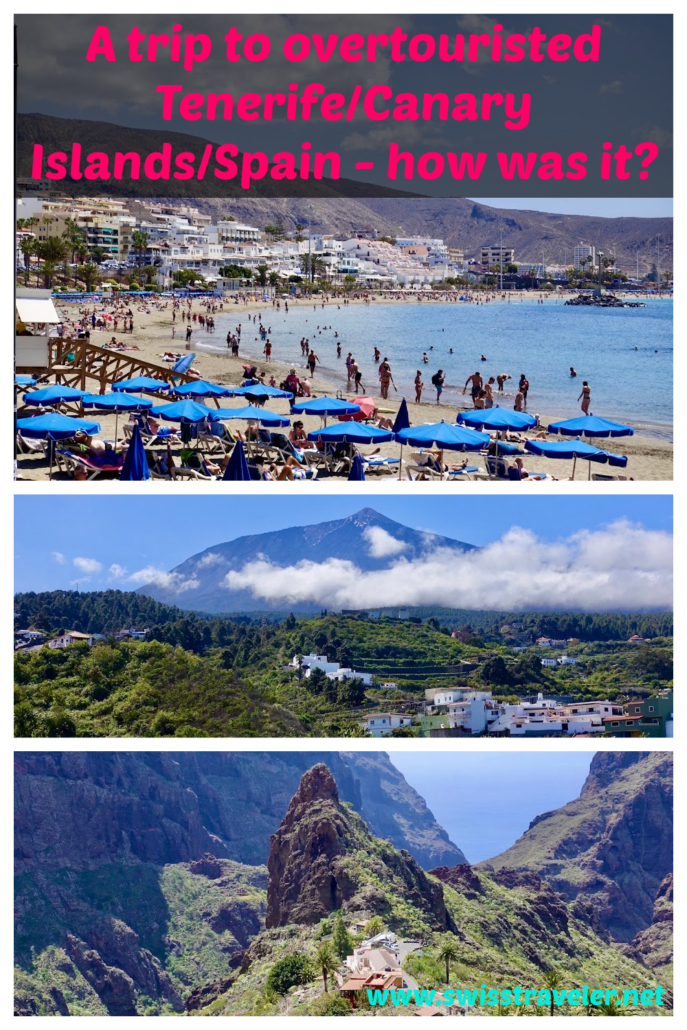
The post A trip to Tenerife, Canary Islands, with mixed feelings first appeared on Swiss Traveler

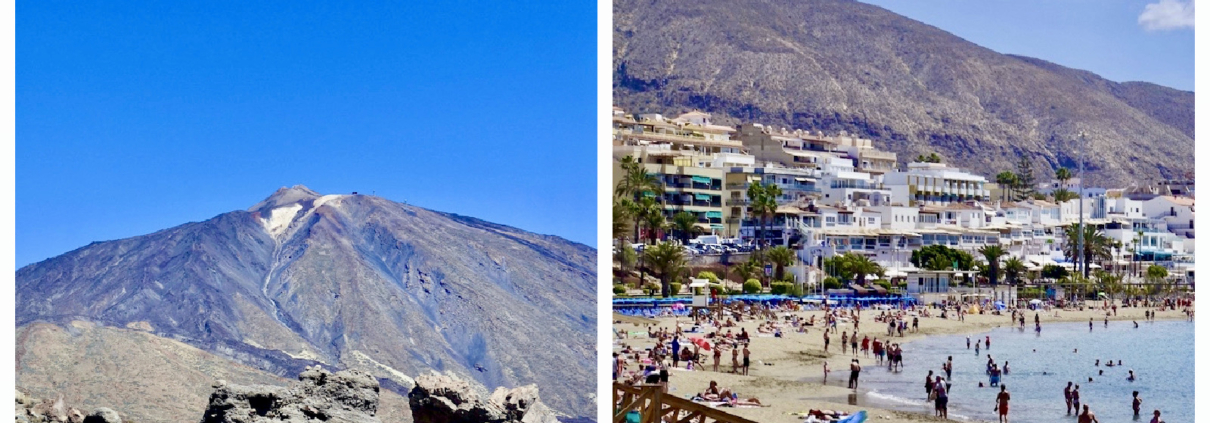
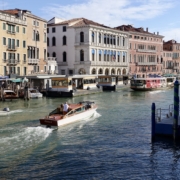
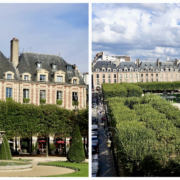

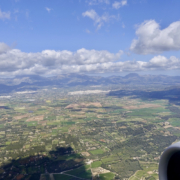

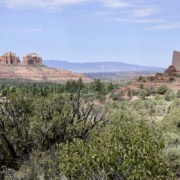


Leave a Reply
Want to join the discussion?Feel free to contribute!